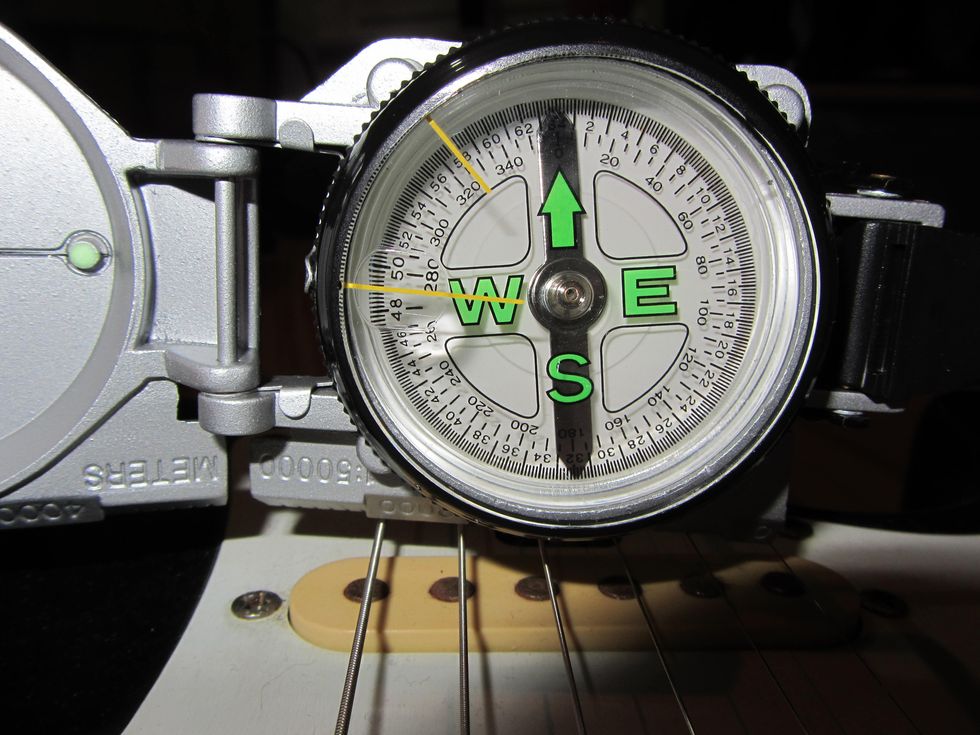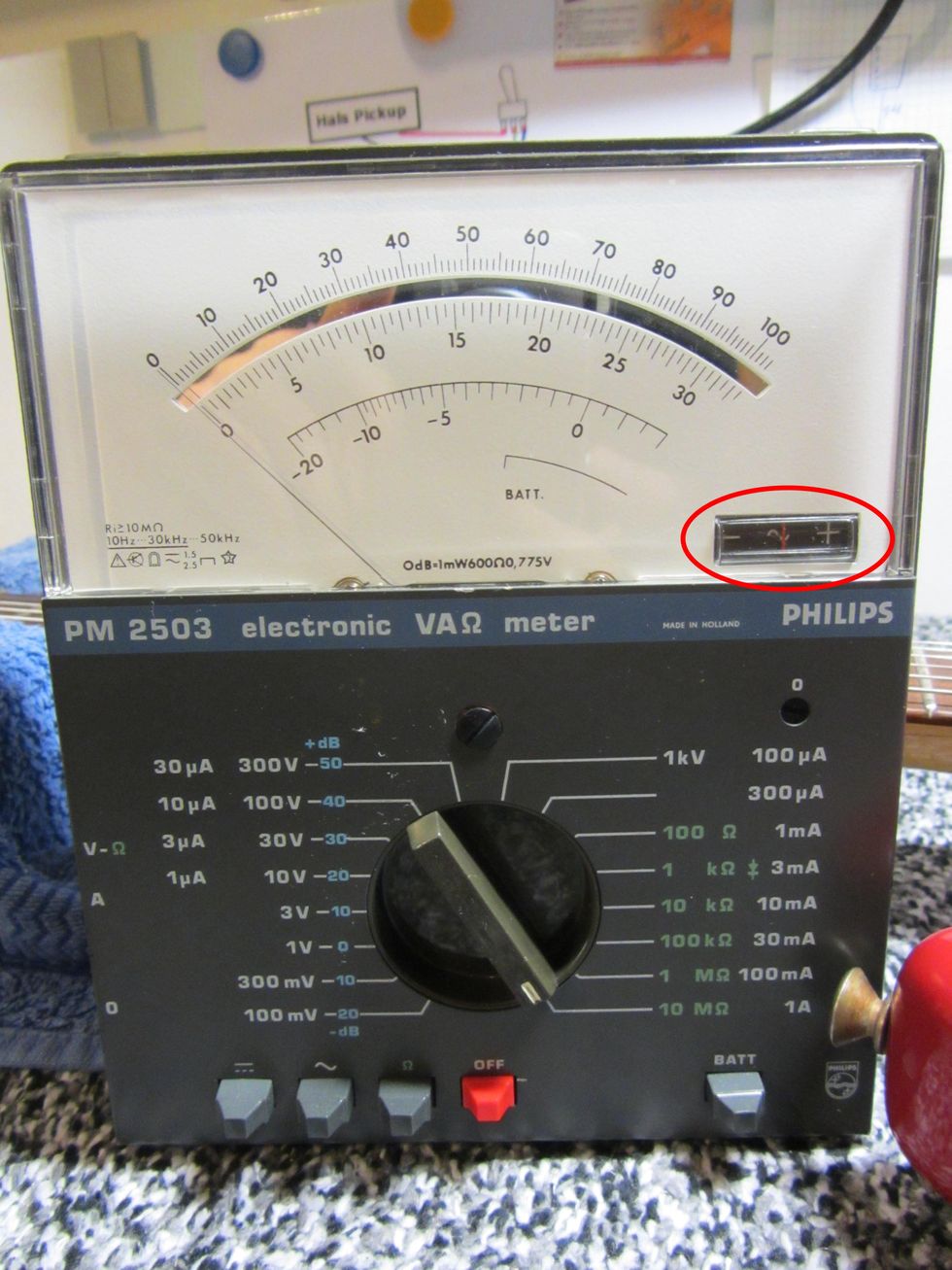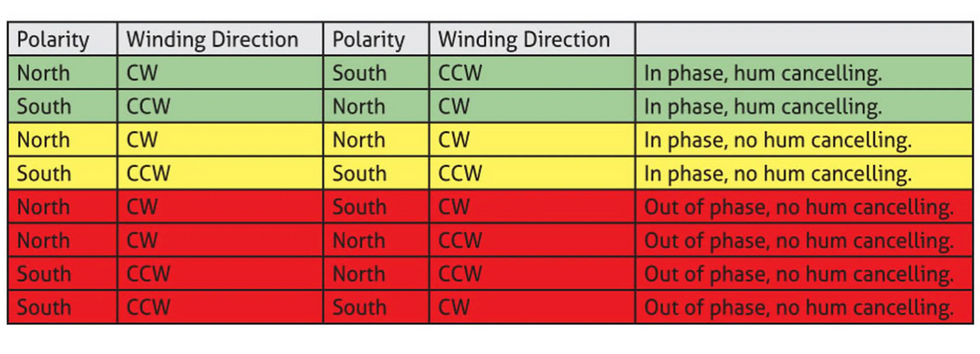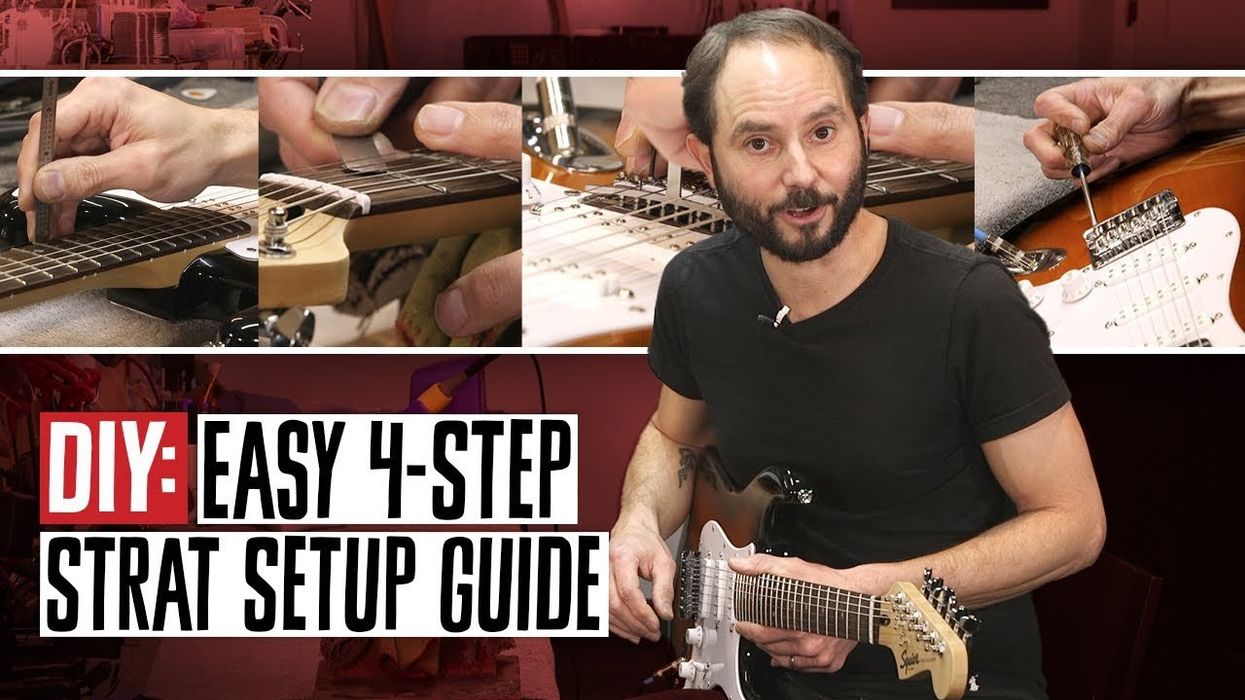Which Fender amp would pair with this breezy ’65 Gibson ES-125CD?
With a few simple tweaks, you can get any classic Fender amp to cooperate with whatever guitar you like.
I find endless fascination in experimenting with different combinations of guitars and amps. Many of you may also have made surprising discoveries with certain amps and guitars as “killer” combinations. In this column, we’ll delve into the reasons behind these magical pairings, and discuss how you can modify your amp to achieve the elusive tone that lingers in your mind day and night. While having a variety of amps at your disposal is one solution, it’s undeniably an expensive and impractical one. Fortunately, knowledge is a more accessible asset. In my previous column, I explored speaker cabinets that can expand the versatility of your amp. I recommend giving it a read, as it closely ties into this topic.
Let’s begin with the Les Paul. Its mahogany body and neck contribute to a warm tone with exceptional sustain and attack, attributes further enhanced by the fixed bridge and solidbody construction. While most people associate the Les Paul with Marshall amps for classic rock tones, I find its clean tone more intriguing and often overlooked. Recently, I have discovered several live performances by American blues guitarist Mike Welch on YouTube, showcasing a fantastic Les Paul tone: bright and clean, with crucial attack that heightens dynamics and “fingerspitzengefühl”—in short, intuition and sensitivity.
Here’s my approach to achieving a fabulous clean Les Paul tone with classic Fender amps. I’ve found that amps with all EQ controls (bass, mids, treble, and a bright switch) work best for me. This allows me to rein in the bass and add top-end sparkle. For amps lacking a mid control, such as the Princeton, Deluxe, and Pro, I recommend installing a 25k mid pot in the amp’s ground-lift spot. This modification widens the tonal range from extremely icy and scooped to full British warmth. The Les Paul’s humbuckers, with their significant bass and mids, pair well with larger Fender amps that offer clean headroom and a firm low end. Personally, a Twin Reverb or Super Reverb loaded with firm, American-style speakers is my preferred mate for a Les Paul, providing enough attack to prevent muddiness in the tone.
“Hollowbodies pose a challenge, as they can generate unpleasant, squealing feedback when too close to a loud and bass-y amp.”
Now, let’s shift our focus to Gibson’s semi-hollow and hollowbody ES guitars. These guitars exhibit a bit less attack and a more vibrant, acoustic flavor. The semi-hollow ES-335 pairs well with most Fender amps, given there’s enough clarity. However, hollowbodies pose a challenge, as they can generate unpleasant, squealing feedback when too close to a loud and bass-y amp. To counter this, I prefer smaller amps for smaller venues, such as the vibrato channel of the Deluxe Reverb, thanks to its bright cap. The Princeton Reverb and the Deluxe’s left, normal channel lack the sparkle and clarity I prefer with the airy Gibson ES guitars. Since I installed a 100 pF bright cap in my 1966 Princeton Reverb, it has proven to be a perfect match. But newer, brighter speakers can compensate for the missing bright cap, too.
If you predominantly use humbucker guitars with older Fender amps, consider swapping to a low-gain preamp tube to expand the amp’s volume control range. The 5751 tube, with a gain factor of 70–80, makes it easier to dial in a sweet spot, providing more usable span on the volume control than the original 12AX7, with its gain factor of 100. Using the amp’s second, low-impedance input can also lower volume and gain, but keep in mind that you’ll lose a bit of treble in the process. Therefore, reducing the preamp tube gain is a better option.
In the single-coil league, the strategies for achieving a desired tone are almost the opposite of the humbucker league. Here, the focus is on taming brightness and generating enough warmth, especially with Stratocasters that have bright and low-output pickups. Thicker strings and increased pickup height contribute to warmth, but pushing the amp hard enough is equally crucial. This causes it to break up in both the power amp and preamp sections, creating rich harmonics in the upper mid and treble frequencies. These harmonics balance and smooth out the guitar’s scooped tone. With larger Fender amps, I may want to reduce clean headroom by disengaging speakers to increase speaker impedance, or by swapping to less efficient speakers. An easy tube mod involves replacing the 12AT7 phase inverter tube with a 12AX7 to decrease clean headroom in the power amp section. You can find details on these well-known mods in my past columns.
Hopefully, these examples can inspire you to discover golden tones with the amps and guitars you already have.
Bryan’s MIDI-based ’board.
The ability to MIDI-enable your pedalboard and convert audio to MIDI using plugins or software adds a whole new level of experimentation and creativity for guitarists.
In 1983, music had a banner year: U2’s War, the Police’s Synchronicity, Metallica’s Kill ’Em All, Stevie Ray Vaughan’s Texas Flood, Talking Heads’ Speaking in Tongues, and ZZ Top’s Eliminator were all released (to name but a few). It was also the year MIDI (Musical Instrument Digital Interface) was unveiled, and saying that it forever changed the musical landscape is an understatement. Until very recently, guitar-oriented manufacturers had never taken advantage or expanded on MIDI possibilities.
For guitarists, MIDI was a bit of a useless concept—something the synth player in your band endlessly yammered about while you plugged in your amp and pedalboard and set up for the gig. Well, tighten up your belts, the Dojo is now open.
The Paradigm Changes
Developed by a consortium of musical heavyweights, including MIDI’s progenitor Dave Smith (Sequential Circuits), Ikutaro Kakehashi (Roland Corporation), and engineer Tom Oberheim, MIDI enables synths and drum machines from various makers to “talk” to one another using a standardized “language” over a 5-pin cable. The original MIDI instruments included Roland’s TR909 and Jupiter-6, and Smith’s own Prophet 600. Today, MIDI can be carried over USB, 3.5 mm, and 1/4" TRS cables, as well as Bluetooth. It’s also something that more and more pedal makers are taking advantage of en masse. Many months ago with the help of my friends at XAct Tone Solutions here in Nashville, I finally wired up a MIDI-based pedalboard (Photo 1). Why would I ever go down this rabbit hole?
“Until very recently, guitar-oriented manufacturers never took advantage or expanded on MIDI possibilities.”
For several huge reasons: It gives me greater control over all of a given pedal’s obvious (and hidden) parameters that I can adjust simultaneously using expression pedal(s); the ability to toggle, latch, or tap tempo for many pedals at once; to create, save, and adjust wildly divergent preset parameters on the fly (using CC and PC messages); and organize song lists and set lists, for starters.
While this is possible with multi-effects pedals from Line 6, Fender, Neural DSP, Boss, Kemper, etc., I often find that I don’t like all the sounds bundled within these units. I may not like certain types of amp models, overdrives, choruses, reverbs, fuzz, and delay offerings from one maker, and prefer the algorithms of another brand entirely. With more and more pedal manufacturers embracing MIDI, we’re much closer to a “having our cake and eating it too” scenario.
I can further use my MIDI-enabled pedals with instruments beyond keyboards, drum machines, samplers, and other MIDI controllers (this may be the subject of a future Dojo). But for now, I want to get your creativity fully charged, and take you down another rabbit hole I stumbled into!
Becoming a Convert
Let me give you one of my new favorite “effects” I’ve been exploring. This involves using any plugin or software that will convert audio to MIDI. Certain DAWs (Ableton, Pro Tools, etc.) already have the ability to convert an audio file to MIDI. If your DAW does not, you can use Melodyne and pitch-based plugins, or free ones specifically made for this like NeuralNote or Basic Pitch, which were developed by Spotify.
Try This
Now let’s “break” the plugin. Either use a prerecorded audio track (guitars, vocals, bass, keys, or even ambient field recordings), or grab your guitar and record something with all the effects you would normally use. Delays are particularly fun to have here since they repeat pitches already played! Now convert this audio track to MIDI. In Pro Tools, right-click on the audio file and select “Copy Audio as MIDI.” I tried this using a fuzzed-out solo I played on a recent record I produced.
Next, create an instrument track and instantiate a soft synth of your choice (I’ve used Arturia’s Jup-8 with one of my tweaked presets). Now paste (Cmd or Ctrl+V) the MIDI-ized audio onto the instrument track. Based on your sensitivity settings, you should have all kinds of crazy extraneous notes in various octaves.
From here, solo the instrument track with your new MIDI, and let your imagination loose! Pay attention to the parts of your original audio track that were accurately “preserved” and what parts were not. You can now play with velocity, duration, quantization, and transposition for any and all notes. For example, I chose to isolate notes that were originally part of the delay and then adjusted them to match the underlying implied chords I soloed over—thus turning my guitar’s delay into a MIDI chord accompaniment for my solo!
I hope you canceled your dinner plans. Blessings, and until next time, Namaste.
The passive treble and bass control wiring.
Want more tone control from your guitar? A passive 2-band EQ might be the solution you’re looking for.
Hello and welcome back to Mod Garage. In past columns, we’ve discussed improving passive tone controls by doing things like changing tone caps (smaller capacitance for a “warmth control”), using different tapers and pot resistance values, installing treble-bleed circuits, etc. But let’s take it one step further, this time converting traditional passive tone control into a kind of double-EQ control set.
In general, you can’t increase anything with passive electronics. But you can reshape the tone by de-emphasizing certain frequencies, making others more prominent. Removing highs makes lows more apparent and vice versa. In addition, the use of inductors (which is what a pickup behaves like in a guitar circuit) and capacitors will create resonant peaks and valleys (bandpass and notch), further coloring the overall tone. Some people like this interaction, while others don’t, but it is all relative and it all works at unity gain.
As is often the case when we talk about guitar innovations, Leo Fender created a passive 2-band control that is used on various models of G&L guitars—notably the S-500, Legacy, and Comanche. This is called the P.T.B. tone control, which stands for “passive treble and bass” (sometimes also referred to as “passive 2-band tone control”). G&L calls the P.T.B. feature “dramatically more effective than a standard tone control. Treble and bass frequencies can be separately cut with this exclusive passive style circuitry.”
So how does this system work? You have two tone controls in your guitar: One is for treble and the other one for bass, similar to what you can often find on guitar amps. The treble control acts like the standard tone control you know from all your electric guitars. When you turn it down, it cuts some treble, making the tone warmer. The bass control does exactly the opposite, cutting bass frequencies, which is a great option to shape the tone. The latter is sometimes referred to as “clarity control” because removing some bass will clean up the tone noticeably, bringing back some airiness and dynamics. This is an especially great feature when you play heavy distortion, giving you the ability to prevent muddiness.
Leo Fender’s original design used a 250k audio volume pot, a 500k audio treble control, and a 1M reverse audio control for bass. This was a really clever and well-chosen combination that will work with humbuckers as well as single-coil pickups. Later on, the configuration was changed to three 500k audio controls and an additional 200 pF “cap only” treble-bleed circuit between the input and output of the volume pot. I think the configuration changed because of economic reasons, but also maybe because reverse audio pots are easily available but usually not always in guitar-friendly dimensions. Anyway, it’s up to you what configuration you want to use, and there is no law against creating a custom one, like 250k volume + 2x 500k for P.T.B., which is cool for single-coil equipped guitars.
”This is an especially great feature when you play heavy distortion, giving you the ability to prevent muddiness.“
The original design for the tone caps was:
Treble control: 0.022 μF, which is pretty much standard even today. We’ve talked about this several times in past columns, so feel free to choose the capacitance you like best. A larger value like 0.033 μF or 0.047 μF will cut more treble, while a smaller value like 0.015 μF or 0.01 μF will cut less treble.
Bass control: 0.0022 μF (2200 pF). Don’t make a decimal error and mix this up with the 0.022 μF from the treble control. The bass cap is another field of experimentation to fine-tune your tone, but here it works in the opposite direction compared to the treble control: the smaller the cap, the greater the bass cut. So if the stock 0.0022 μF cap cuts too much bass, step up to a 0.0033 μF or even 0.0047 μF cap.
Naturally, the Stratocaster comes to mind when thinking about this mod because it has the three knobs you need and it’s easy to convert. But in general, you can add the P.T.B. to any passive guitar with at least three pots. If you want to use it in a guitar with only two pots, which is usually master volume and master tone, you can substitute the tone control with a stacked pot, which is two pots using the space of only one. In a Gibson-style guitar with four controls, it can be reconfigured to something such as two volume controls (one for each pickup) + P.T.B., so there are plenty of options.
I’ve shown the wiring as a general wiring that is not for a specific guitar. The hot input wire is usually coming from your pickup selector switch and depends on the guitar and the switch that is used. The wiring shows the now standard P.T.B. version using three pots with a standard audio taper. I left out the treble-bleed circuit for better clarity. If you want to add it, solder it between the input and output lugs of the volume pot. So, here we go (see drawing above):
When using a bass-cut pot with a reverse audio taper, the wiring on the pot has to be changed slightly. Instead of connecting the cap to lugs #2 and #1, it has to be connected to lugs #3 and #2, and the blue wire now connects to lug #3 instead of lug #1. The rest of the wiring stays exactly the same.
That’s it! Next month, we will talk about the German Hofner control panel from the early ’60s that was used on the famous Beatle bass, but also on a lot of their guitars, so stay tuned!
Until then ... keep on modding!
Nashville luthier and repair tech Dave Johnson from Scale Model Guitars leads you through a simple process to improve your guitar's playability by showing the steps to execute a neck adjustment, dial in your string action at the bridge, improve your nut slots, and lock down stable intonation.
Photo courtesy of singlecoil.com
A second look at the considerations that go into combining pickups from different manufacturers in one guitar.
First, let’s discuss polarity. In short, we can define the polarity of a pickup as the direction—north or south—of the magnetic field.
It’s important to consider polarity when attempting to combine pickups and achieve a hum-canceling effect. You’ve probably seen RWRP—reverse wind, reverse polarity—in a pickup description, especially when looking for Strat middle pickups. Hum canceling is only achieved when both pickups have opposite phase and opposite polarity—so, one pickup needs to have north and the other south polarity.
Humbucker pickups also work on this principle. Both coils have opposite phase and polarity, so when you combine them in series or in parallel, it will be free of hum. (The fun really starts when you start considering coil-splitting options, but that’s for another time.)
What happens if you combine mismatched pickups? You’ll receive hum or out-of-phase tones, and, in the worst possible scenario, both at once. As a guideline: If you want two pickups to be in phase, both the polarity and the wind direction have to be either identical or opposite. In other words, two pickups with the same wind and polarity will be in phase, and so will two pickups that have opposite polarity and wind. If the two pickups have the same wind but different polarity, or the same polarity but different wind, they will be out of phase with each other.
“What happens if you combine mismatched pickups? You’ll receive hum or out-of-phase tones, and, in the worst possible scenario, both at once.”
Since many pickup manufacturers do not mention the polarity in their pickup descriptions, here are some simple ways to figure it out on your own. (This can be a real problem because you need the pickups on your table to test them. If you need to know about polarity before ordering a new pickup, there is no way around contacting the manufacturer and asking for it.)
Use a pickup polarity tester. There are several polarity testing devices on the market that are specifically made for pickups. They are usually not very expensive and are a must-have tool for every guitar tinkerer. The most common one is made by Schatten Design Canada, which is very easy to use. It’s a see-through tube with a magnet inside, you simply move it on the magnet you want to test and receive a clear reading if it is north or south.

Photo courtesy of singlecoil.com
Using a compass. If you have an analog compass, you can use it as a polarity tester for pickups. When using a compass, the needle will always point toward the north magnetic pole. So, if your pickup has a polarity of north, it will point toward the pickup, and if it’s south, it will point away.

Photo courtesy of singlecoil.com
Using an analog meter. In the ’60s, it was common that analog meters had a built-in polarity test. Most of these vintage meters are sought-after items today and fetch high prices. We have a Philips meter from the late ’60s in the shop. If you have one, here is how to use it to determine polarity: Connect the pickup wires to the meter: connect the white one as the + and the black one as the –. Use a heavy screwdriver or a piece of steel and move a piece of steel quickly towards the magnets of the pickup without touching them. (A regular string doesn’t have enough mass for this.) When the polarity meter (the small rectangular display on the right bottom of the main display marked in red) shows +, this is defined as north, while – means south.
Now, let’s take a look at phase. We can define the electrical phase of a pickup as the direction of its winding, which can be clockwise or counter-clockwise. But it’s not all that easy.
You can determine the direction of a pickup’s winding by how it is wound when looking at it from above, with the pickup facing up toward you. I think this definition comes from the early Fender years, and the factory never changed this terminology, winding all pickups for several decades in a clockwise way. For a long time, reverse-wound middle pickups had a clockwise winding, and to change the phase they simply interchanged the two pickup leads. From an electrical point of view, this is all okay. But there are two good reasons to make reverse-wound pickups in a counter-clockwise direction:
Many players believe that a counter-clockwise wound pickup sounds different or better than a clockwise-wound one with reversed leads. And if a string contacts the pickup’s magnet, a clockwise-wound pickup with reversed leads will short out when the hot gets connected to ground and will go silent. If you touch the magnets of such a pickup with your finger, you will be rewarded with a loud humming noise.
Besides the clockwise/counter-clockwise terms, some pickup makers will use the following descriptions, which explain how the pickup is attached to the winding machine and the direction it moves in the machine:
• top right, top going (counter-clockwise)
• top right, top coming (clockwise)
• top left, top going (clockwise)
• top left, top coming (counter-clockwise)
So, if you have to determine the phase of a pickup, here’s how you can do that.
Build yourself a phase-testing unit. This was covered back in our July and August 2017 issues (and can be found here and here), and is probably the easiest way to measure phase.
Use an analog meter with a polarity test option as mentioned above. Connect the pickup wires to the meter, the white (hot) one as the + and the black (ground) one as the –. If the wires of your pickup have different colors, you will have to use the ones that are defined as hot and ground according to the manufacturer. Now, use a heavy screwdriver or a piece of steel or iron and move it quickly toward the pole pieces of the pickup without touching them. When the polarity meter shows +, it means that the wire that is connected to the + input jack is really the hot connection of the pickup. If it shows –, it means that the pickup wire connected to the + input jack is ground. You will be surprised how many times the white wire is not really the hot connection!
Using a standard analog meter without a polarity test is not recommended, and you’ll risk breaking your meter. There are ways to tweak a standard analog meter for this measurement, e.g. using the zero and scale setting or a resistor in series with the pickup to get the needle somewhere off zero, near the middle of the scale. It’s also possible to use a standard digital multimeter by connecting the pickup to it, using the DC/ohms setting, but you have to look quick to note what happens. These MacGyver procedures are only recommended for experienced techies.
This phase/polarity table shows what you can expect from every possible combination:

I hope this will help you avoid possible trouble when you want to combine pickups from different companies. We’ve only scratched the surface of phase and polarity, so ask a pickup pro sometime and they can tell you all about it.
That’s it! Next month, we will take a deep dive into the G&L Passive Treble and Bass control (PTB), so stay tuned!
Until then ... keep on modding!


